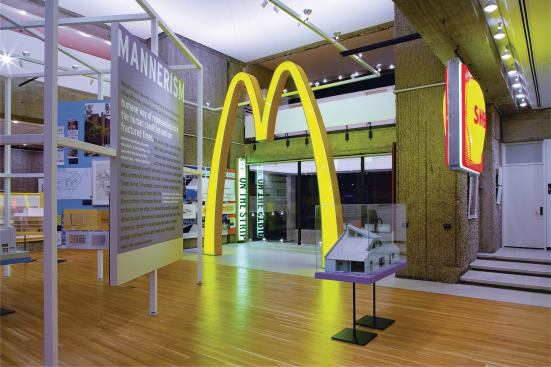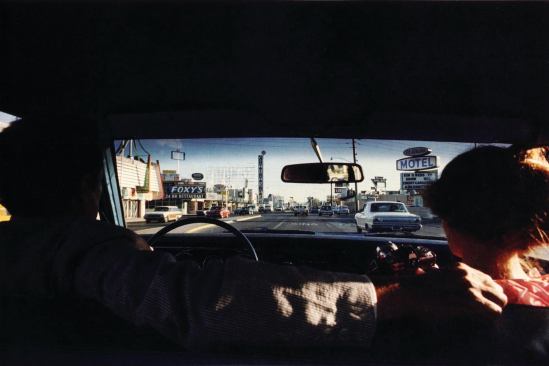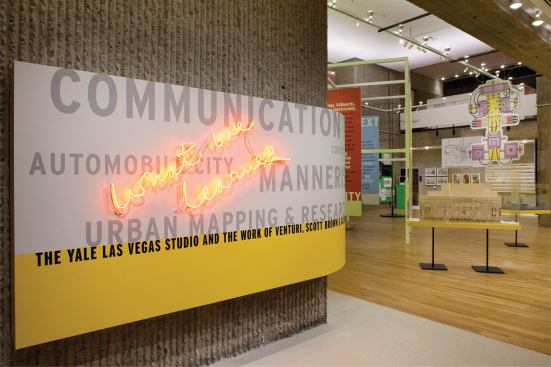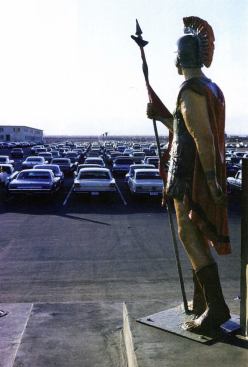Yale Media Services
What the husband-and-wife team pursued in their Learning From La…
“Well, ‘what happens in Vegas … ’?” began a Yale University professor, Emmanuel Petit, about halfway through the first day of the “Architecture After Las Vegas” symposium held at the New Haven institution in January. It was just a matter of time before someone invoked Sin City’s marketing slogan—such low-hanging fruit at a highbrow conference. The crowd that filled the auditorium of Paul Rudolph Hall—academics, architects, and students—tittered at the pop-culture quip.
Pop was the order of the day. The conference, organized to celebrate the work of Robert Venturi and Denise Scott Brown, was held in conjunction with a pair of exhibitions, “What We Learned: The Yale Las Vegas Studio” and “The Work of Venturi, Scott Brown and Associates,” which featured, among other things, the gilded antenna from the architects’ Guild House apartments. Also hanging in the Architecture Gallery were photographs of that 1968 studio trip to Vegas: oversized snapshots that capture a desert city full of signs and parking lots. In light of CityCenter, the Vegas in the viewfinder looks oddly innocent, but when Venturi and Scott Brown and students touched down for 10 days of research, the Strip was the Wild West of architectural production.
The 1972 book that followed, Learning From Las Vegas: The Forgotten Symbolism of Architectural Form, is now almost as iconic as the Stardust sign. Discussed at length by several speakers, including Columbia University architectural historian Mary McLeod and Ohio State’s Aron Vinegar (author of I Am a Monument, a 2008 book about the book), Learning From Las Vegas is best known for introducing symbolism with its influential discussion of Ducks and Decorated Sheds. But in her keynote address, Scott Brown made clear that the Learning From Las Vegas studio was as much a social project as it was about form (something that gets lost when Venturi and Scott Brown’s work is lumped under Postmodernism).
Defying prescriptive modernist orthodoxies about form and planning, the studio took the progressive teachings of 1960s social scientists and activists such as Herbert Gans and Jane Jacobs to heart. A marked shift within the discipline, the studio was, according to Scott Brown, an activist outgrowth of the movements then bubbling up on campuses: civil rights, social justice. Or as Yale’s architecture dean, Robert A.M. Stern, said, Venturi and Scott Brown “have the ability to see things as they are and not how they think they should be.”
Theirs is a philosophy that continues to inspire subsequent generations of practitioners. “They continue to exert greater and greater influence on us,” noted attendee Michael Meredith of MOS, drawing parallels between the heroic forms the architects battled against then and starchitecture today. “Basically, the corporate-expressionist architecture they were fighting against still remains. If anything, it has become more dominant.”
Contemporary cross-disciplinary design studios and books such as those in Rem Koolhaas’ Project on the City series are clearly indebted to Learning From Las Vegas. Bringing a sociologist’s toolbox to architecture expanded practice in the process. “In retrospect, Las Vegas reminds us to follow the path and condition of open-mindedness in meeting new conditions,” Scott Brown reflected.
Indeed, though architecure is fragmented into many camps, Venturi and Scott Brown’s vision and wit are still meaningful. “Their explorations of high and low culture, of the landscapes of pop—and ordinary—culture, of representation, image, and architecture in an era concerned with communication and media, seem completely relevant,” says Sam Jacob, a partner at the London-based firm FAT who is teaching a Yale studio. “Maybe more relevant now than in their own time.”



